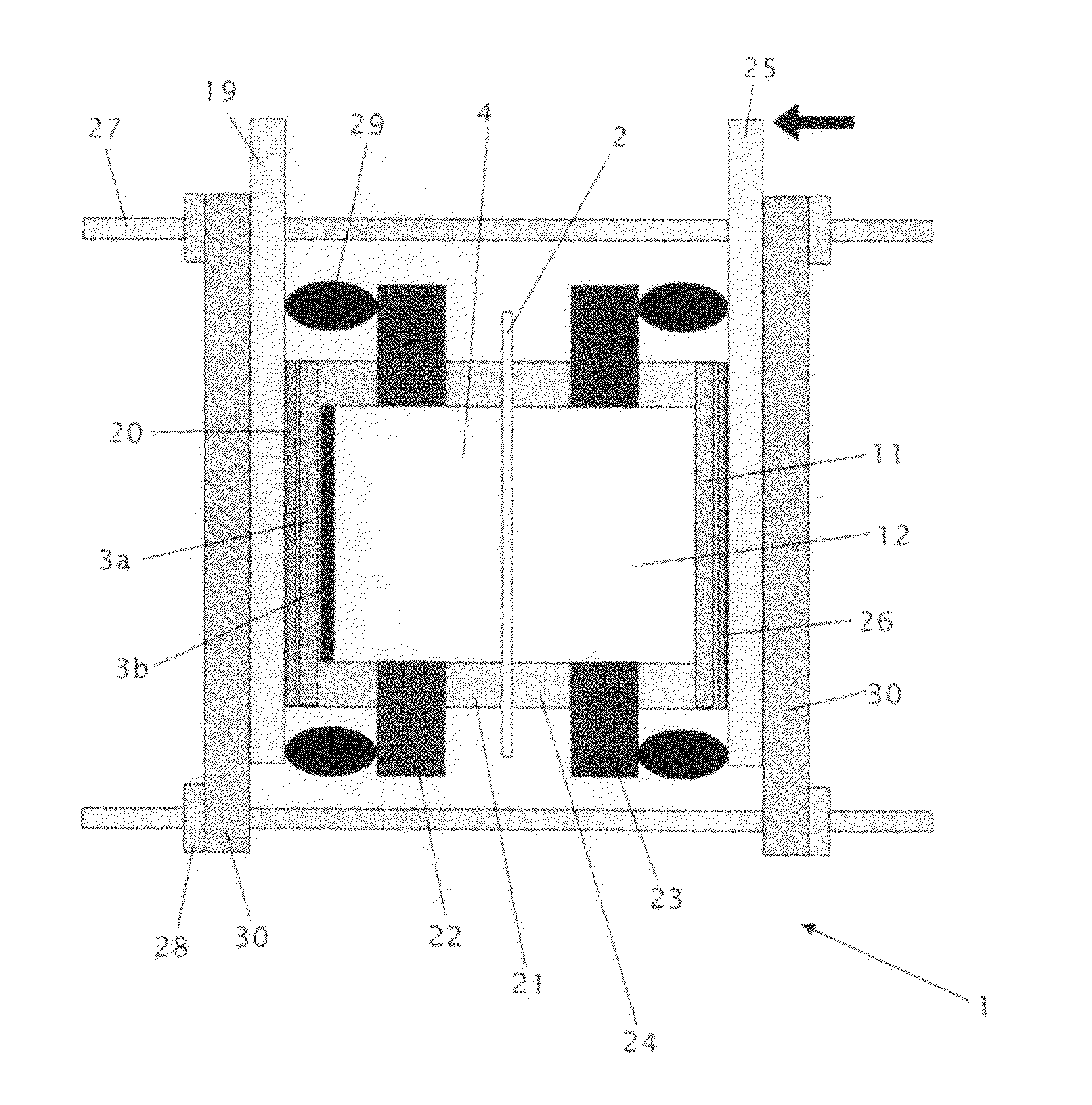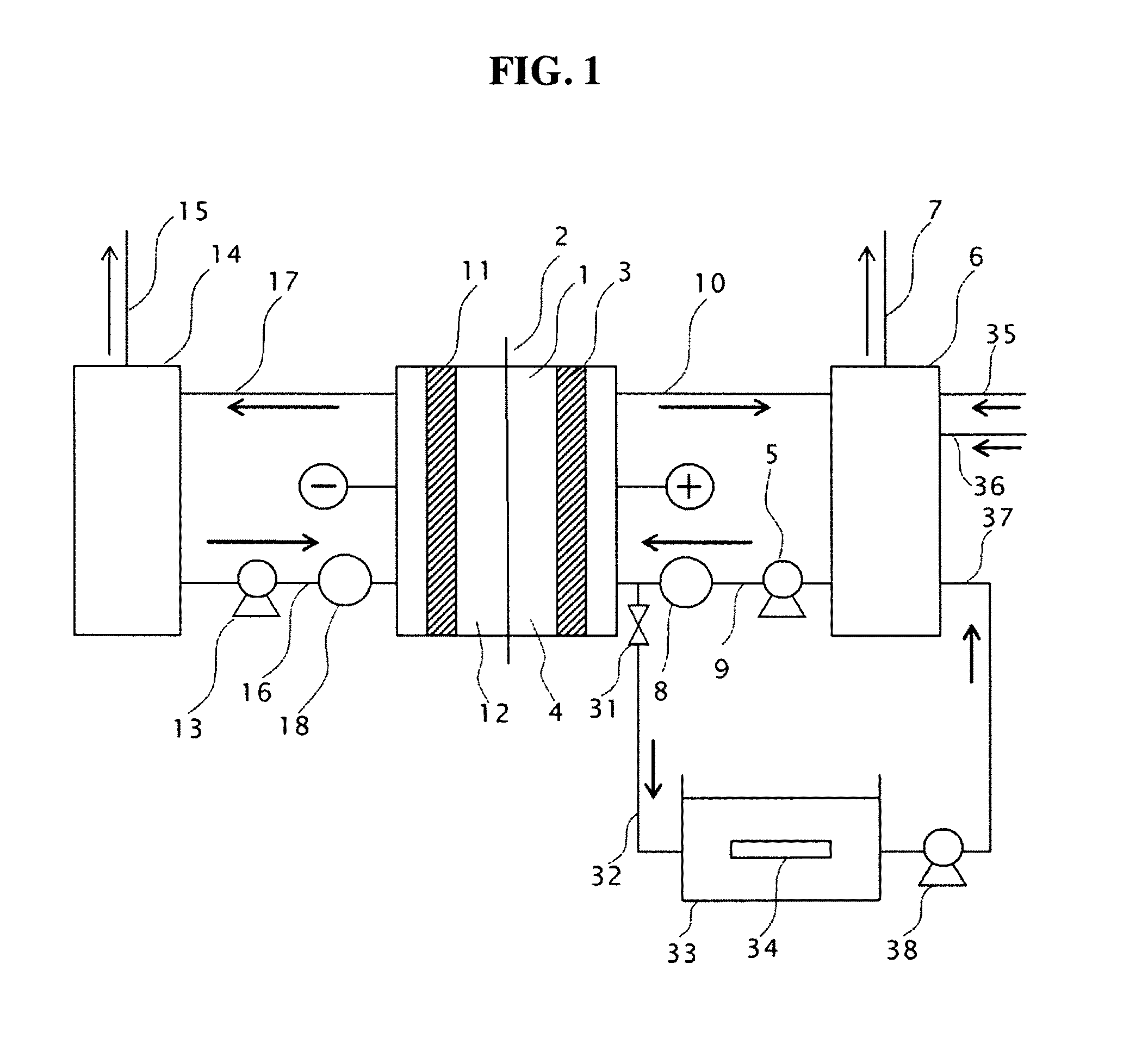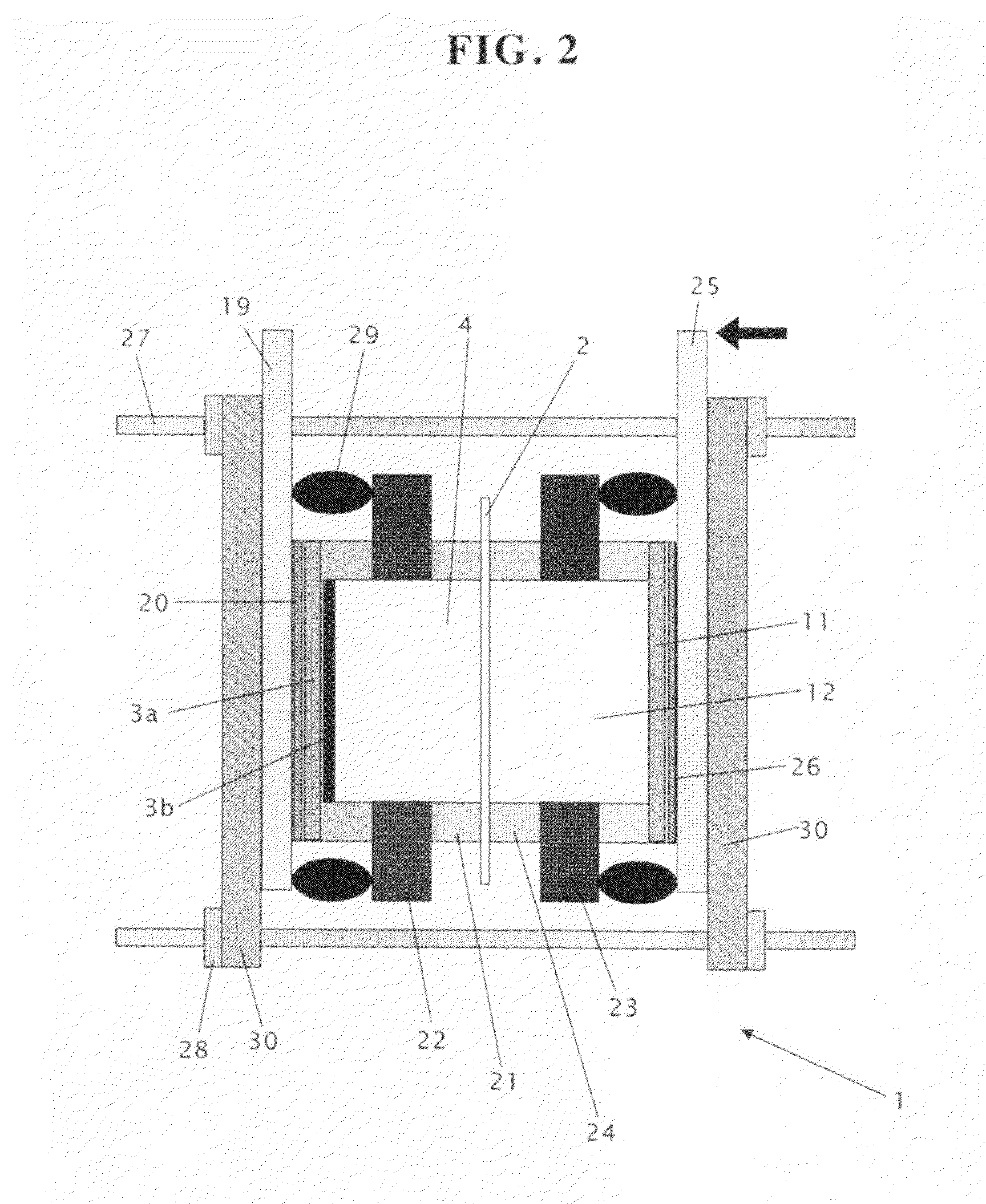Sulfuric acid electrolytic cell and a sulfuric acid recycle type cleaning system applying the sulfuric acid electrolytic cell
a sulfuric acid electrolytic cell and electrolytic cell technology, applied in the direction of electrical-based machining electrodes, electrode coatings, manufacturing tools, etc., can solve the problems of over-all cracking, and affecting the performance of the electrolytic cell. , to achieve the effect of preventing corrosion, superior mechanical strength and high durability
- Summary
- Abstract
- Description
- Claims
- Application Information
AI Technical Summary
Benefits of technology
Problems solved by technology
Method used
Image
Examples
example 1
[0070]On a silicon base material (substrate) of 3 mm thick, 6 inch diameter, a diamond layer of 20 μm was formed by the microwave plasma CVD method applying methane and diborane (10000 ppm to methane) as raw material to be used as the conductive diamond anode. A proper amount of conductive paste (Fujikura Kasei D 550) was applied as adhesive agent over the entire area of the rear face of this anode; and this anode was attached to the center part of the copper current collector of 17 cm dia. with a conductive rib and underwent the hardening treatment for 30 minutes at 100 degree Celsius in an oven to obtain an current collector with a conductive diamond anode and an current collector with a conductive diamond cathode.
[0071]Then, an end plate, an current collector with a conductive diamond anode, a porous PTFE gasket, a cell frame, a porous PTFE gasket, a diaphragm, a porous PTFE gasket, a cell frame, a porous PTFE gasket, an current collector with a conductive diamond cathode, and an...
example 2
[0107]On a silicon base material (substrate) of 3 mm thick, 6 inch diameter, a diamond layer of 20 μm was formed by the microwave plasma CVD method applying methane and diborane (10000 ppm to methane) as raw material to be used as the conductive diamond electrode. A proper amount of conductive paste (Fujikura Kasei D 550) was applied as adhesive agent over the entire area of the rear face of this electrode; and this electrode was attached to the center part of the copper current collector of 17 cm dia. with a conductive rib and underwent the hardening treatment for 30 minutes at 100 degree Celsius in an oven to obtain an current collector with a conductive diamond anode and an current collector with a conductive diamond cathode.
[0108]Then, an end plate, an current collector with a conductive diamond electrode, a porous PTFE gasket of 5.6 inch periphery dia. and 1.0 cm periphery width and a Viton o-ring of 6 inch periphery dia. and 2 mmφ cross section dia. (=gasket+o-ring), a PTFE ce...
PUM
| Property | Measurement | Unit |
|---|---|---|
| electrolytic current density | aaaaa | aaaaa |
| electrolytic current density | aaaaa | aaaaa |
| thick | aaaaa | aaaaa |
Abstract
Description
Claims
Application Information
 Login to View More
Login to View More - R&D
- Intellectual Property
- Life Sciences
- Materials
- Tech Scout
- Unparalleled Data Quality
- Higher Quality Content
- 60% Fewer Hallucinations
Browse by: Latest US Patents, China's latest patents, Technical Efficacy Thesaurus, Application Domain, Technology Topic, Popular Technical Reports.
© 2025 PatSnap. All rights reserved.Legal|Privacy policy|Modern Slavery Act Transparency Statement|Sitemap|About US| Contact US: help@patsnap.com



